Blog
10 Places on Earth that Feel Like Outer Space
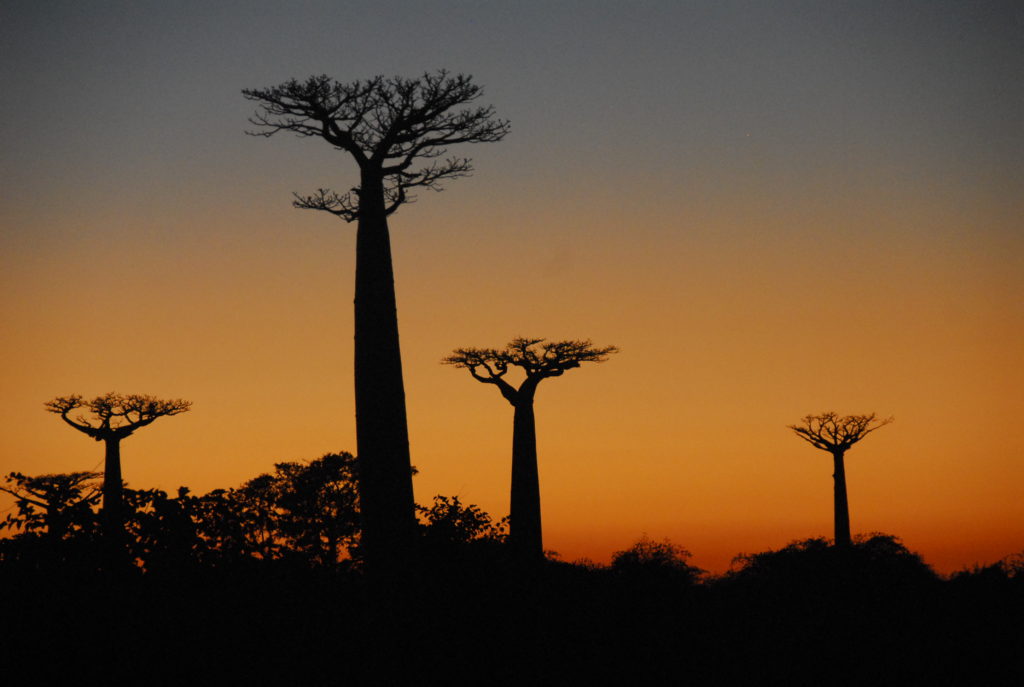
Himali Singh Soin writes about ten places on Earth that feel like outer space. This article was originally published by vice.com. Images by Himraj Soin.
Like every child, I wanted to touch the moon, wear stars on my face and blow bubbles into supernovas. Growing up on a diet of David Cronenberg and Star Wars movies, it always felt like the stars were so close and yet so far. But, like you, I soon learnt that the stars aren’t what they seem. They’re just hot, dying stones instead of lit masses of wonder. So I decided to go in search of the most distant, faraway and paranormal places on this planet instead.
I stocked up on warm jackets, cool hats, canvas, wool, muslin and rope, waterproof cameras and barometers. A plane, a train, a bus, a boat and a yak later, and I was at the peripheries of the planet. There, I found breathtaking views, monolithic outcrops, and vegetation that looked like something from another world. But I was on Earth, held by the same blue sky, feeling like I’d travelled light-years away.
If you want your Instagram to look like Nasa’s ISS feed, then check out these 10 landscapes on Earth that could definitely belong to other planets.
Ikh Nartiin Chuluu, Mongolia
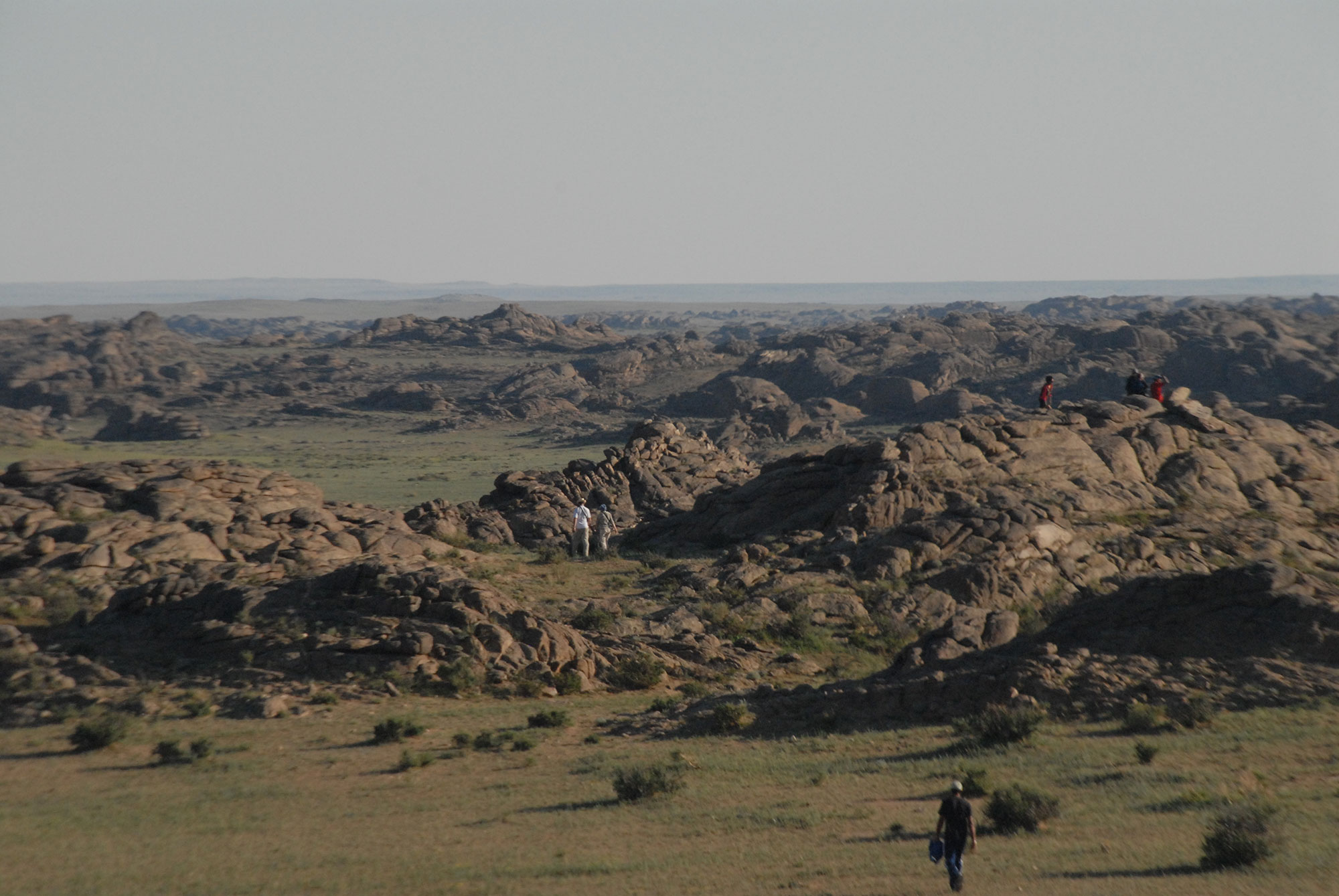
This is an arid region in which traces of dinosaur eggs and fossils have been found. Rocky outcrops look like fallen meteorites that have been flattened and smoothened over time. From the top, the semi-desert steppe is solitary and the only signs of life are rare sightings of the elusive wild Argali sheep in a ravine or an abandoned mine.
Tsingy and Baobabs, Madagascar
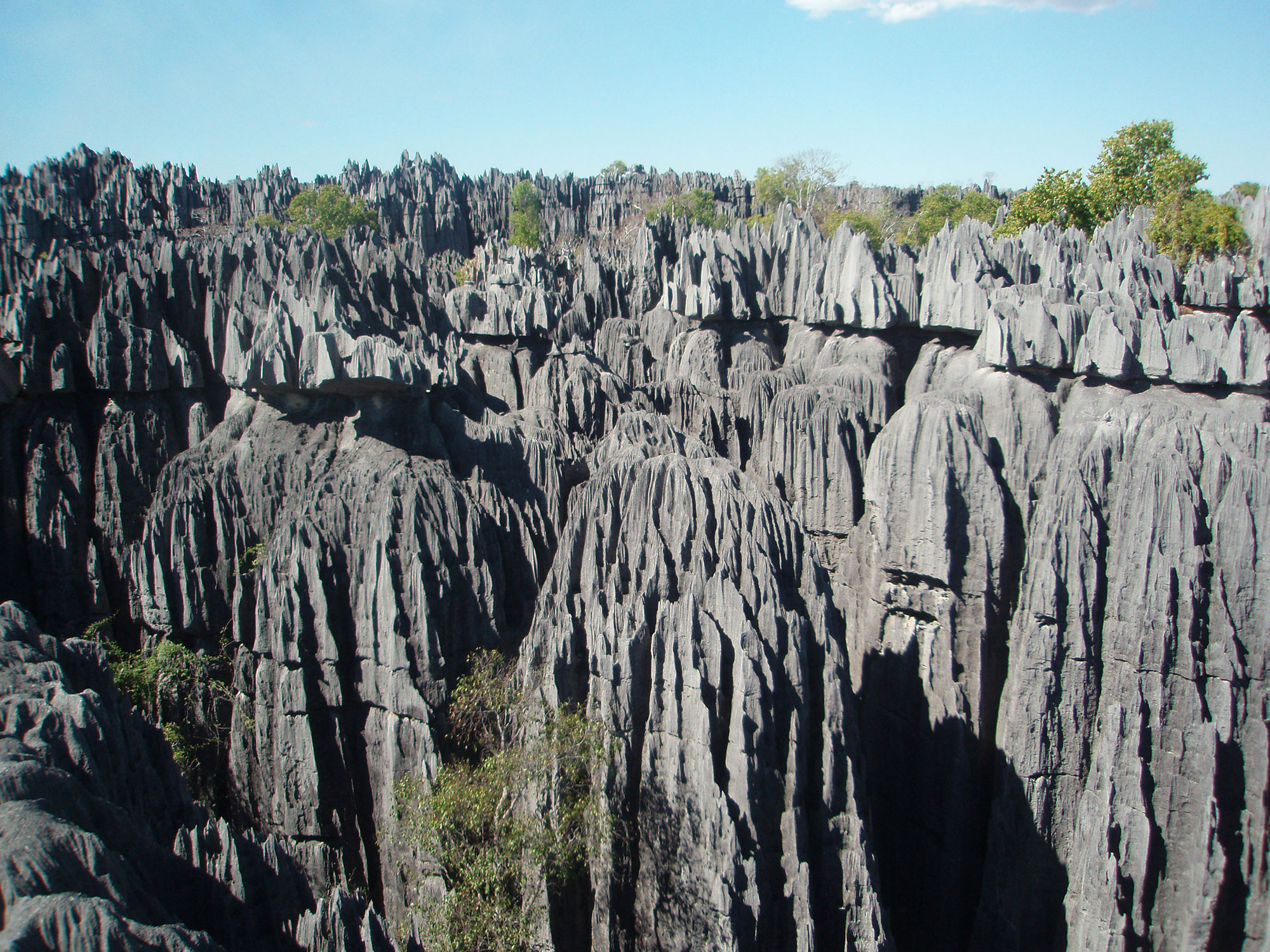
Disney aside, the raw romance of Madagascar makes for a perfect inter-galactic love story. The Tsingy de Bemaraha Strict Nature Reserve is a UNESCO world heritage site, made of sharp limestone formations that seem to tear the sky open.
The upside down trees on Avenue de Baobab looks as if Calvin and Hobbes walked into the Jataka Tales, like currents of electricity, hanging on their own accord.
Sossusvlei and Damaraland, Namibia
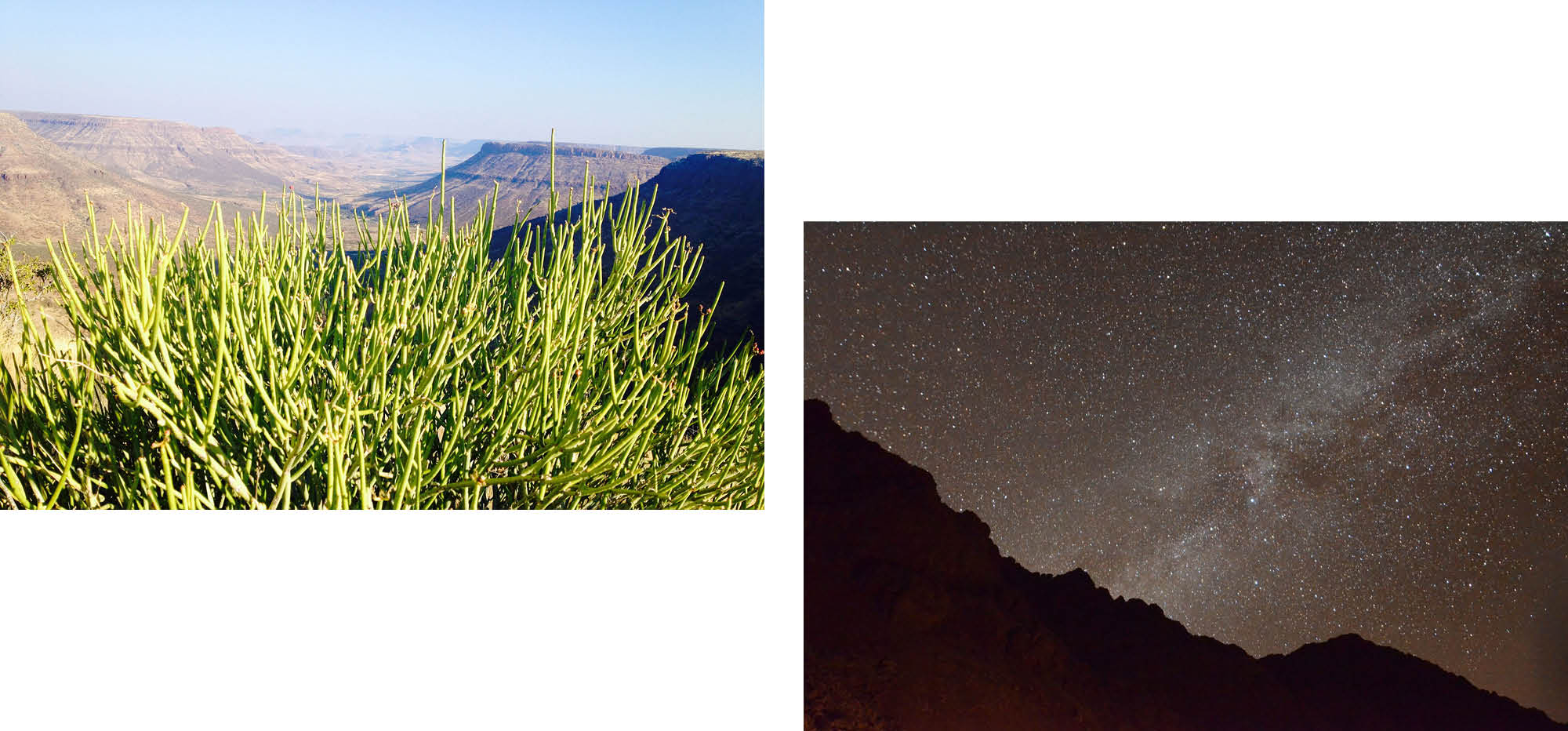
Sossusvlei, which means marsh of no return, is a salt clay pan with burnt-camel thorn trees protruding out of the parched earth. The dunes are also covered in tiny shrubs growing in perfect circles, referred to by locals as ‘fairy circles’ because scientists have yet to learn the reason behind them.
Klip River Valley in Damaraland is the land of rhinos, the unicorns of the earth. Flanked by the Namib Desert in the west and the Kalahari in the east, it looks like a crater where tectonic plates rift and part in pleasant separation. The flat plateaus would make a perfect spot for a UFO landing.
Lamayuru, Ladakh, India
Referred to as ‘moonland’, the high altitude mountain desert is filled with mineral deposits. Its purple and teal hues, combined with the famous Lamayuru Monastery—known as the ‘eternal monastery’—carved out of the mountain, lends that divine sense of the grand unifying theory that everything is one.
Grey Glacier, Chile
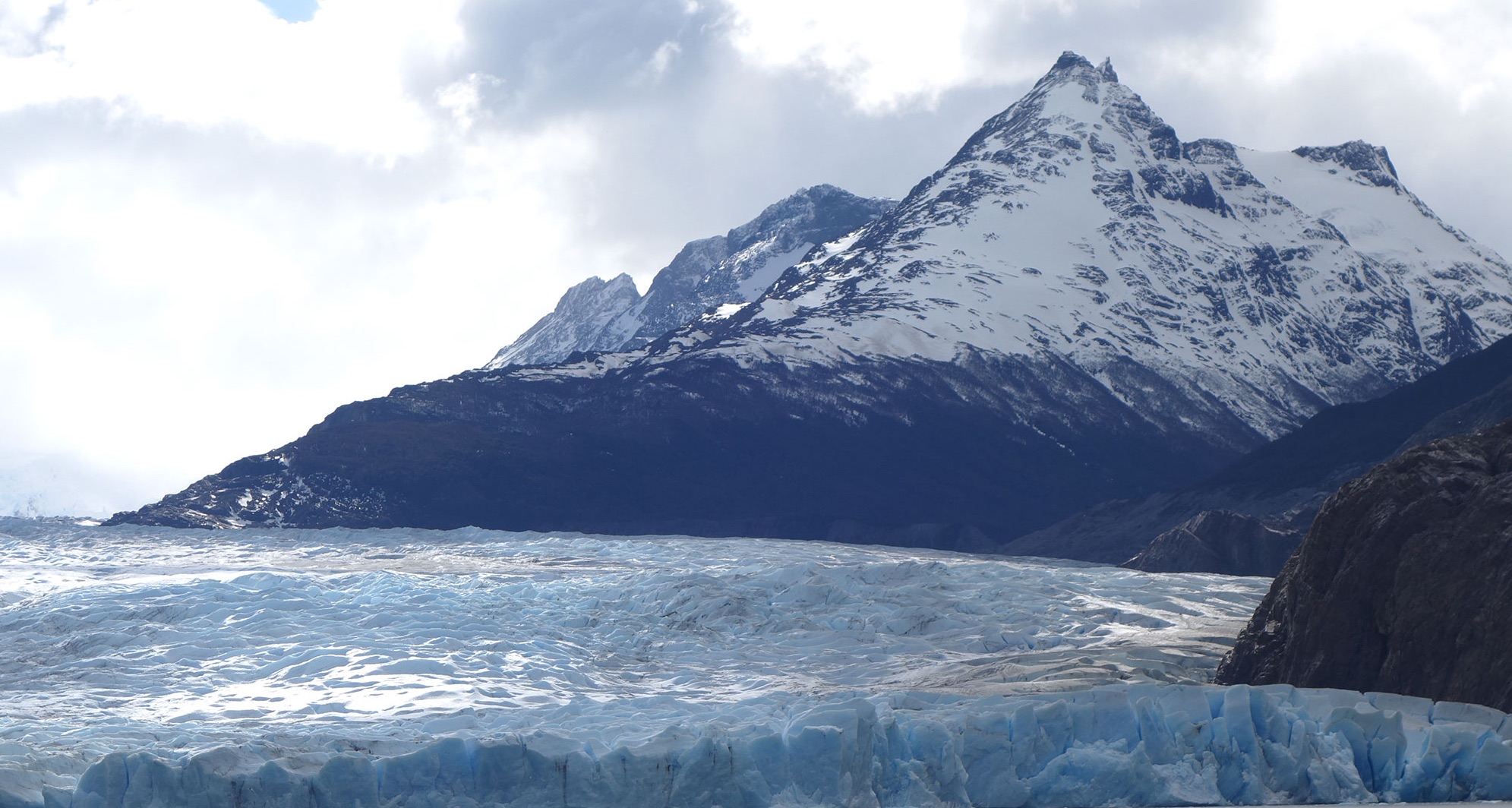
At the southern tip of the Chilean Patagonia is a wall of warm blue ice, rising up as high as fifty feet, giving way to fjords, horns and glaciated valleys. To experience this sense of distance shortening, scale and sculpture is to experience the periphery.
Atacama, Chile
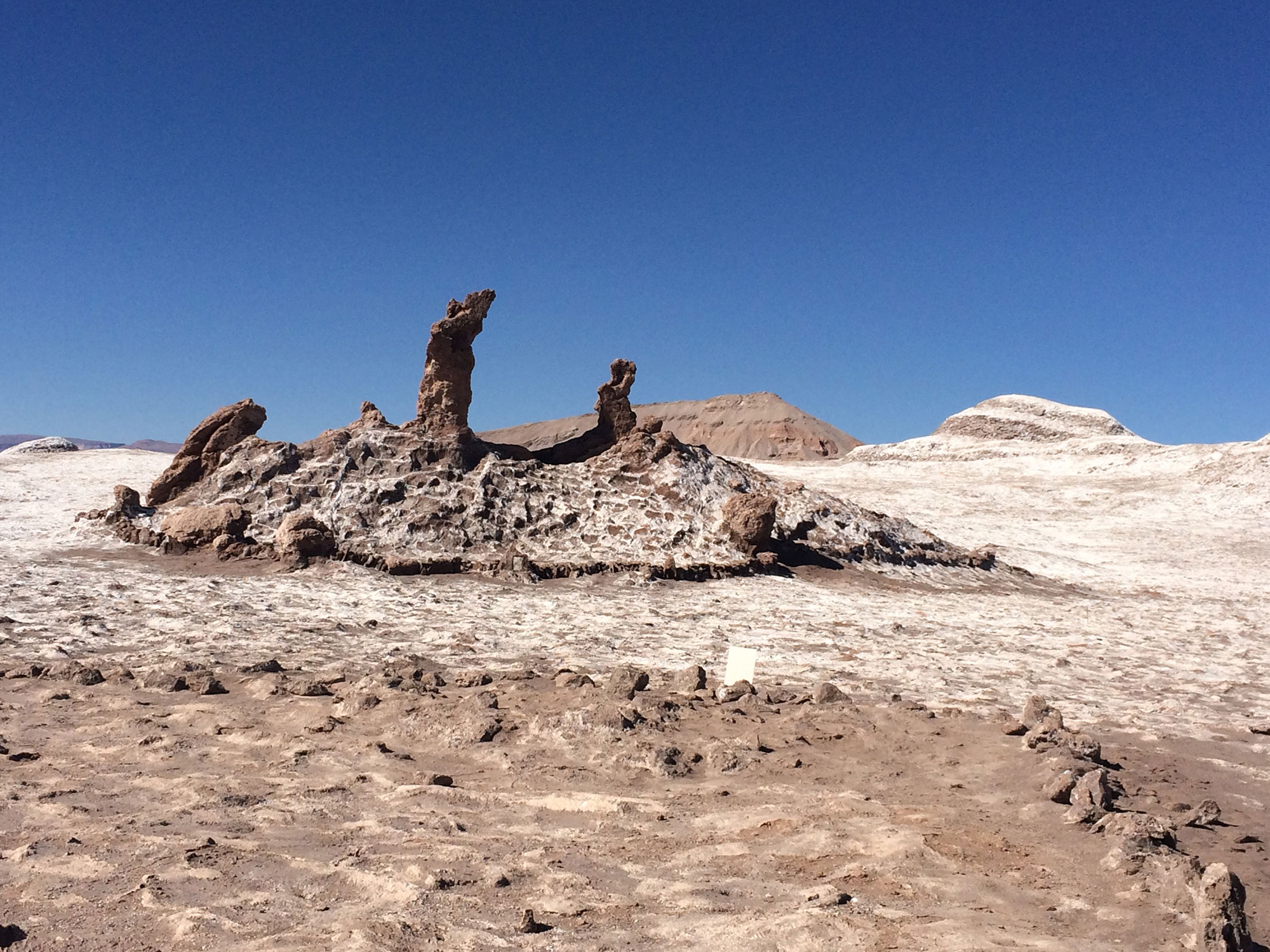
If Saturn was on Earth, here it is. In the driest, most uninhabitable part of the world, the stars look like sheet of silver and the sand is layered in snowy-looking salt. The meteorites found there help astronomers trace the beginning of the Big Bang, and here is where we can actually touch a thing that has burst through from outer space.
Mahabalipuram, India
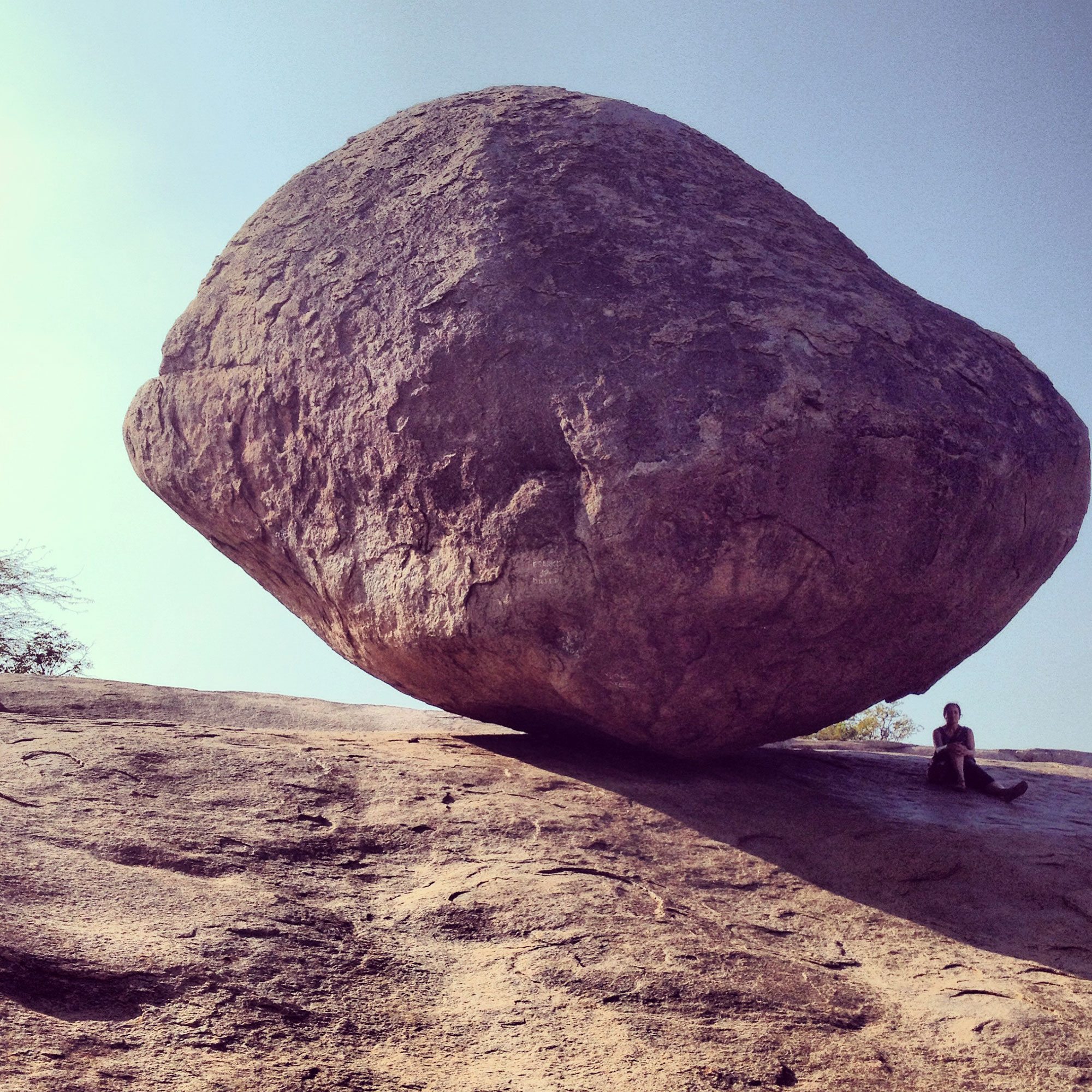
In a small town in the state of Tamil Nadu this 5 meter wide, 250-ton round monolith has been precariously balanced on another rock for over a thousand years. Local residents quip that the rock is the god Krishna’s butter ball. It’s believed that at this spot the forces of this world give way to the mysterious, the miraculous and the marvelous.
Maras, Peru
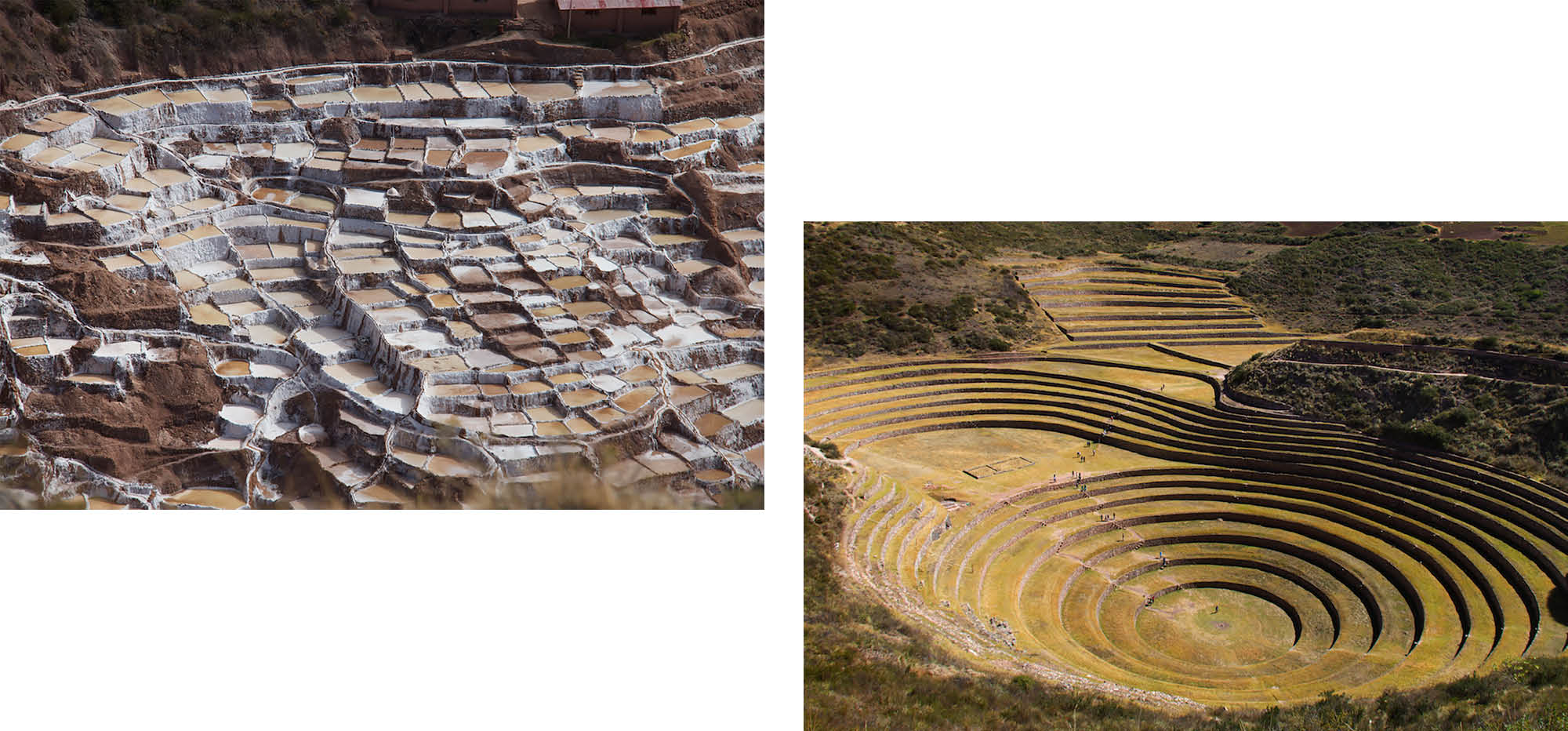
Beside quinoa fields and hummingbirds and orchids, in one of Peru’s sacred Incan valleys there’s a stunning white natural stairway of evaporated salt ponds. It looks cold like Heaven (or Jupiter), and tastes like tears. Maybe it was a natural metaphor for the core, the source of things, like a lesson in the idea of the essence.
Borneo, Malaysia
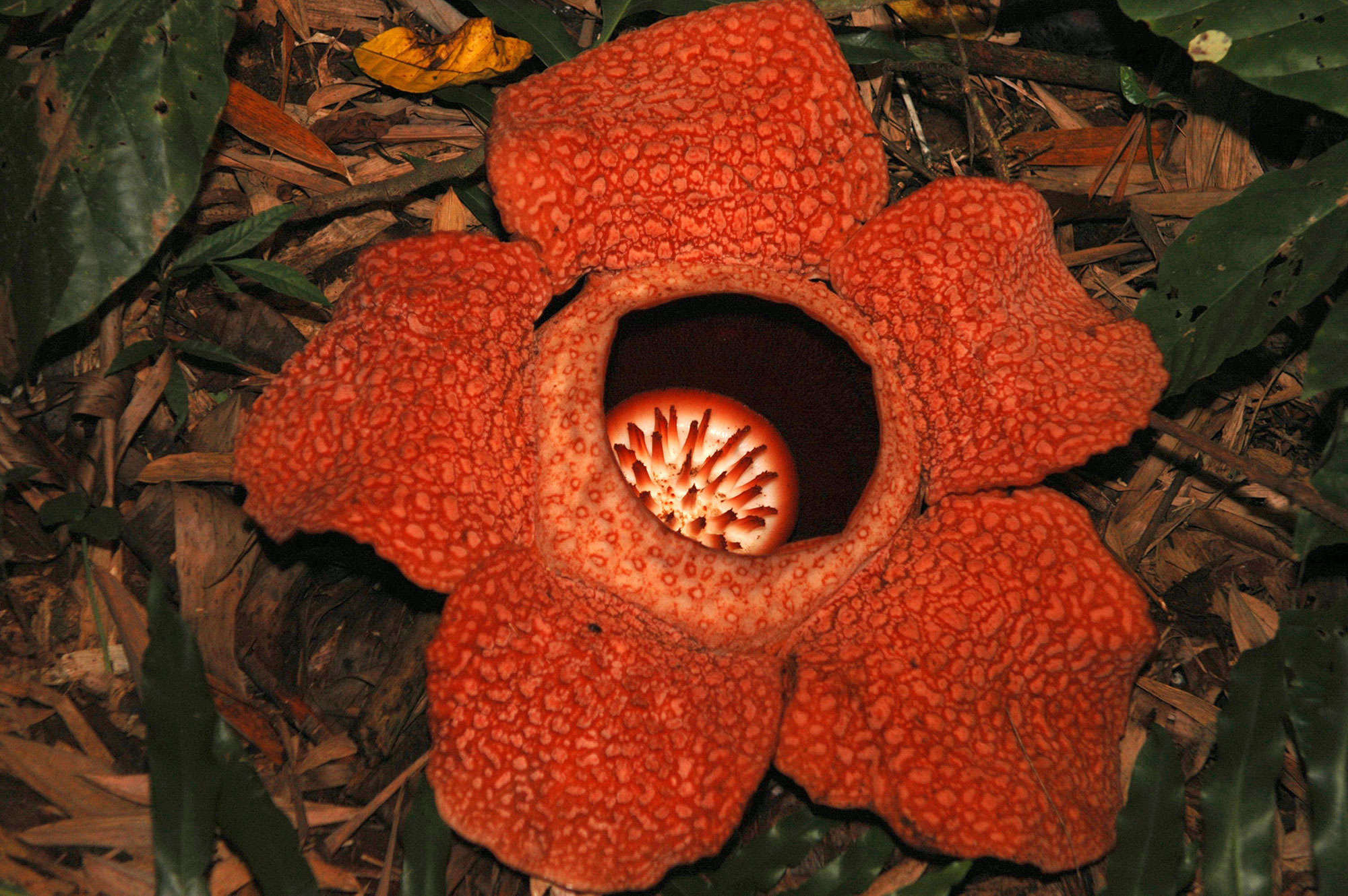
You know those movies about alien plants from nearby galaxies colonizing us? In the deep rainforests of Kota Kinabalu’s forest reserve are the most bizarre and terrifying plants. Beside the giant meat-eating pitcher plant there’s a parasitic flower with leathery petals and no roots, no stems and no leaves. The Rafflesia is the world’s largest and most putrid smelling flower, one meter in diameter and blooms for about a week every year. As the forests dwindle, its status has changed from rare by nature to endangered by humans, but who knows, it may take over the world next week.
Lemaire Channel, Antarctica
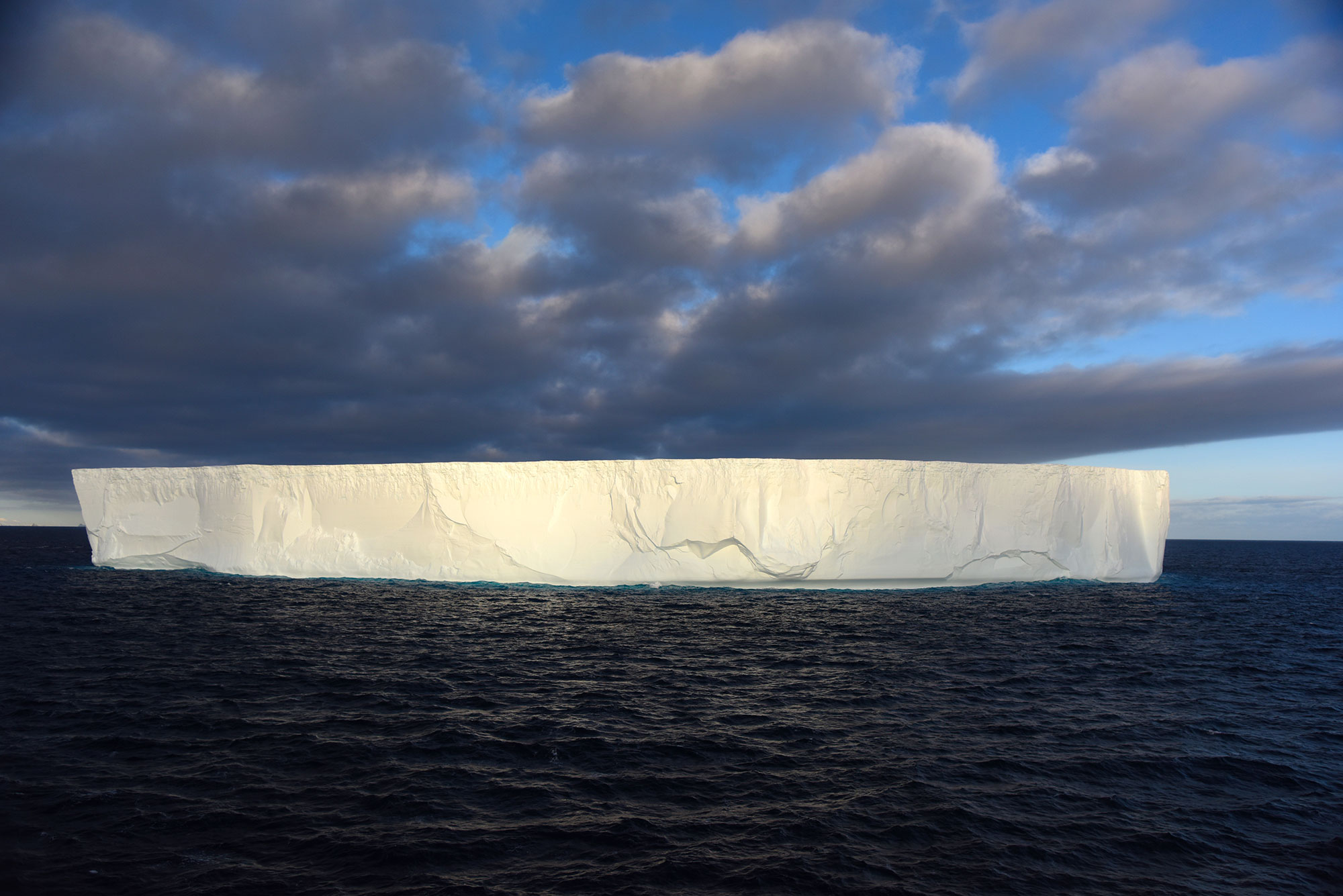
The biggest tabular iceberg, over half a mile long and half a mile wide, broke off the Antarctic Larsen B Ice Shelf and is floating in the Antarctic Ocean. Climate change caused the complete collapse of this ice shelf in 2002, making it the largest disintegration event in 30 years. Witnessing a massive and heavy thing floating with only a third of its structure visible, inverts everything we know to be true. You feel a simultaneous sense of beauty and alarm from seeing it.
This article was originally published by vice.com. Images by Himraj Soin.